Hen of the woods is lovingly called the “dancing mushroom” because when you find one, you might just be inspired to do a little jig in the woods. This mushroom is one of the absolute best wild edible mushroom species. It has a rich, umami flavor, firm, dense texture, and is extremely adaptable for countless recipes.
Most hen of the woods mushrooms average 3-10 lbs, which also means when you find one (or 10!), you have a lot of mushroom to work with. It is not uncommon to find many, many fruiting bodies around one tree or stump. And, while the individual specimens usually only grow up to 10 lbs, there are records of hen of the woods foraged weighing 100 lbs!
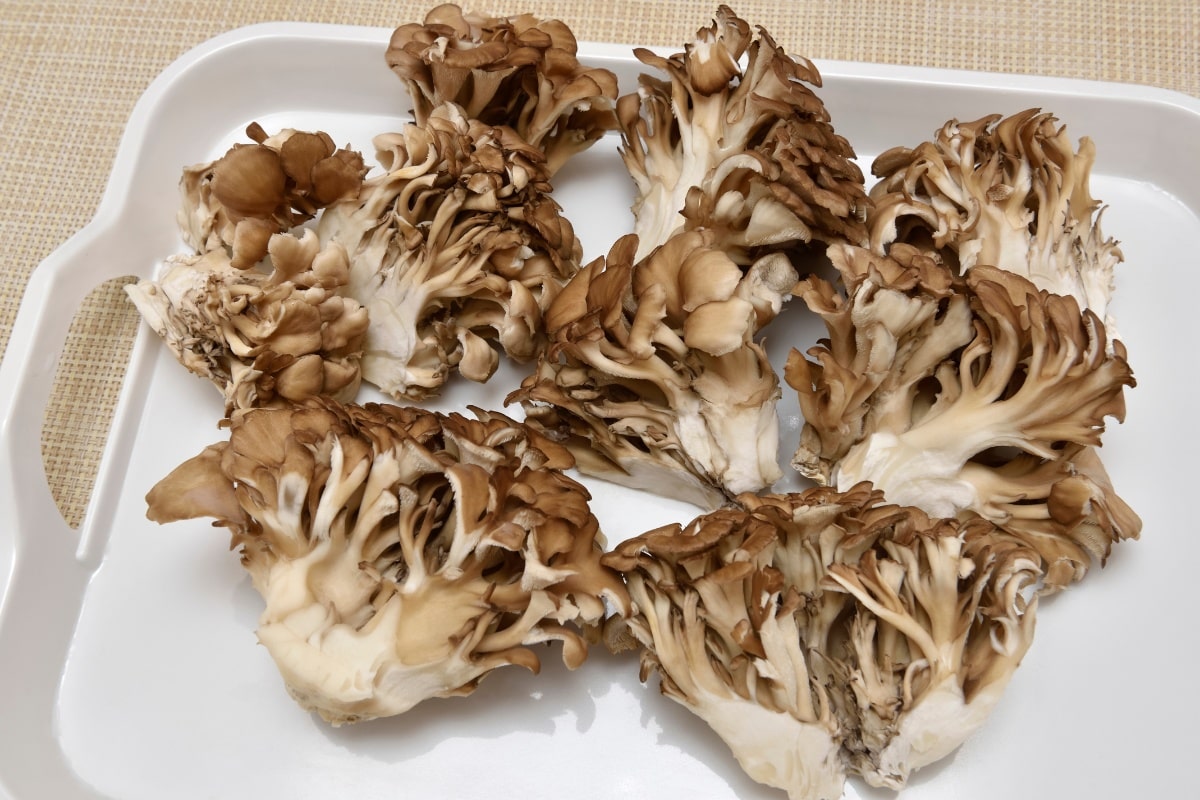
Hen of the woods is also known as Maitake. Maitake is the Japanese name and means “dancing mushroom”. It is also known as “sheep’s head”, “king of mushrooms” (due to its large size), and “cloud mushroom”.
These magnificent mushrooms show up at the base of oak trees from mid-September to mid-October. You can also find them at local farmers’ markets. Or, if you have the patience, you can also grow them. They make impressive “steaks” when sliced and taste fantastic roasted whole – a true forager’s delight.
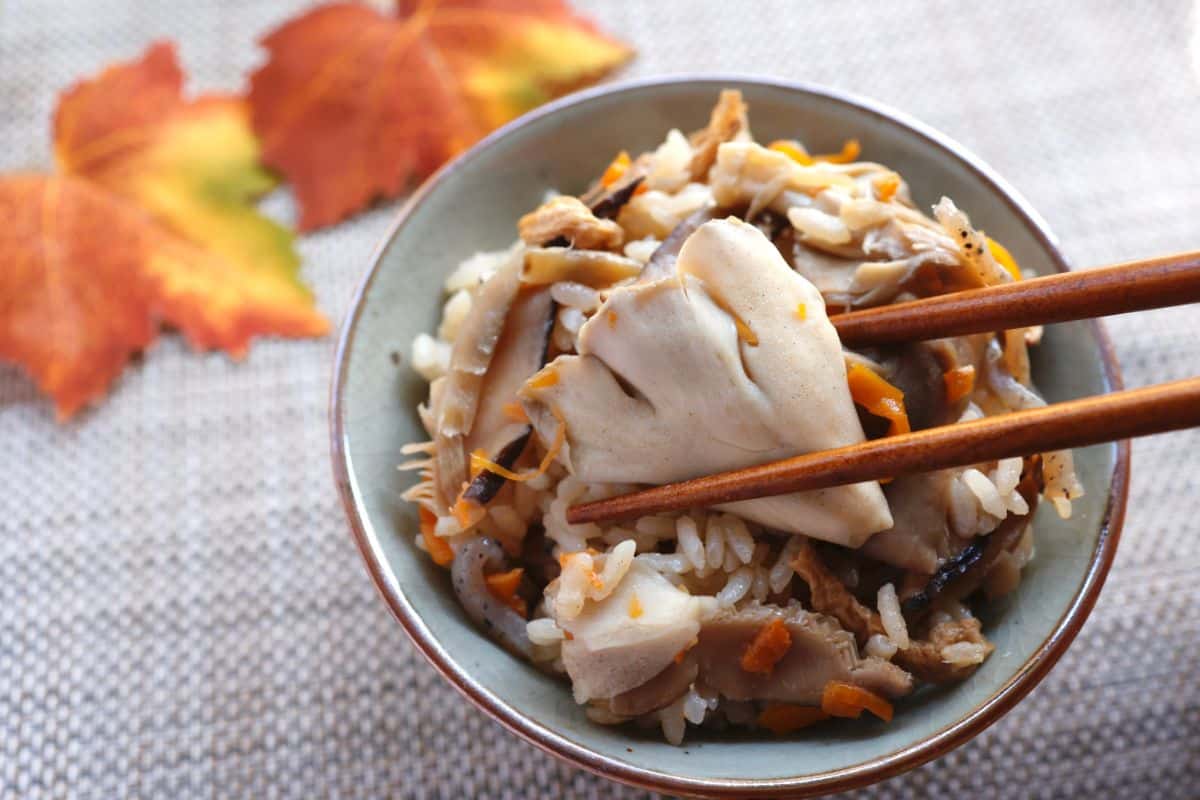
Jump to:
What Is Hen of the Woods
Hen of the Woods (Grifola frondosa) is among North America’s most treasured fall mushrooms. It grows right at the base of hardwood trees, and it really loves oak trees in particular. The Latin name, Grifola, likely means “trap for fish, fishing basket,” and in a larger sense, means an intricately woven object. This very aptly describes the tightly layered and intertwined caps. The Latin word frondosa means “leafy” (fronds are leaves, or a leaf-like growth habit like with ferns). This is a reference to the many overlapping caps that grow like gathered fern fronds. In short, the name translates to “many leafed tightly woven mushroom.”
These mushrooms grow in tight circular clusters. They have fan-shaped caps that interlock and have frilled edges. Their color ranges from grayish to tan-brown to olive on top, while their undersides (pores) are pale with cream-colored flesh. The caps have wavy concentric zones that sometimes look brownish or gray. Often, the tops are slightly velvety, especially when the mushroom is young.
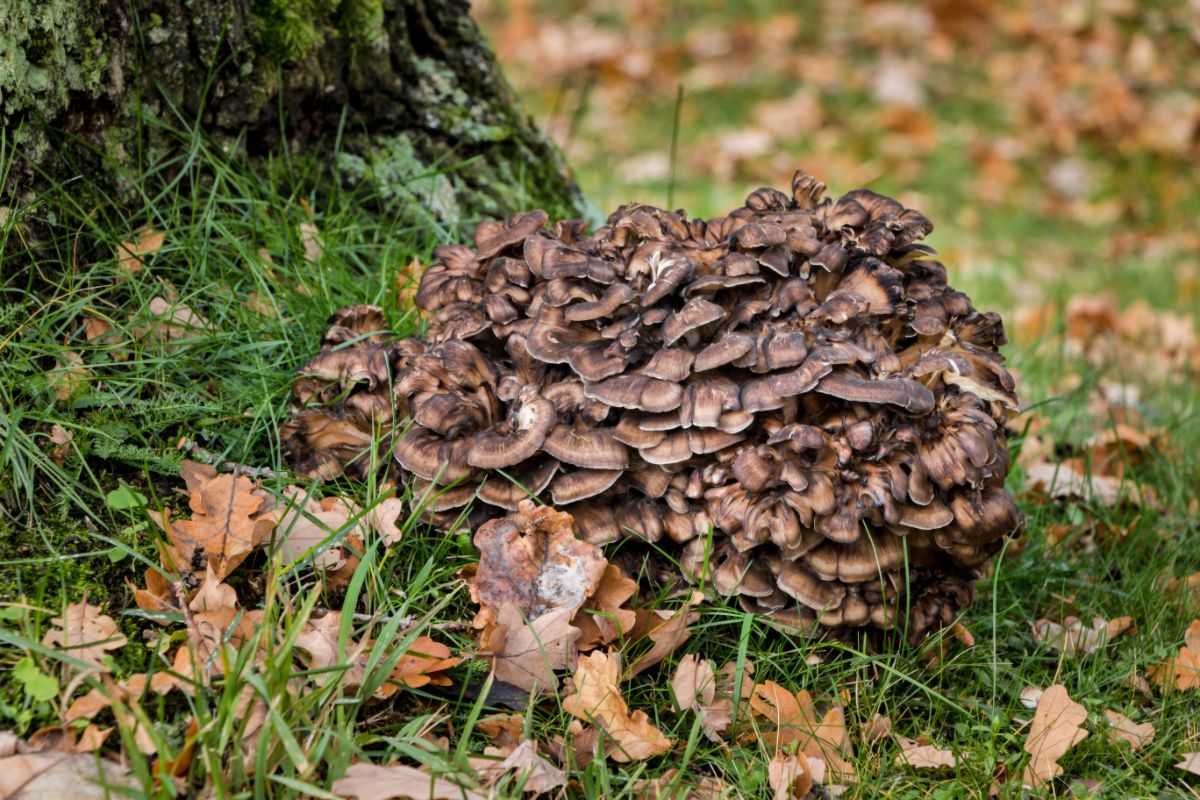
Each cap grows between ¾ to 3 inches wide. The clusters can get huge, stretching up to 40 inches across. A typical cluster weighs 5-10 pounds, but some exceptional ones can reach 30 pounds or more.
Young hen of the woods start out tennis ball-sized and can grow as big as a football or beach ball in just one to three weeks. They start from a dense core and spread out into masses of flat, lobed fronds that lock together.
It is quite a remarkable mushroom and usually a pretty easy one for beginners. It does have one very close lookalike, the black staining polypore, which is also edible, though not as desired.
The way to reliably differentiate them is to rub the underside of the frond. If it turns black, it’s a black staining polypore. If it doesn’t, it’s the hen of the woods. Season also makes a difference, since black staining polypores fruit in spring, summer, and fall, and hen of the woods 99% of the time won’t show up until nighttime temperatures drop to the low 60s or high 50s Fahrenheit.
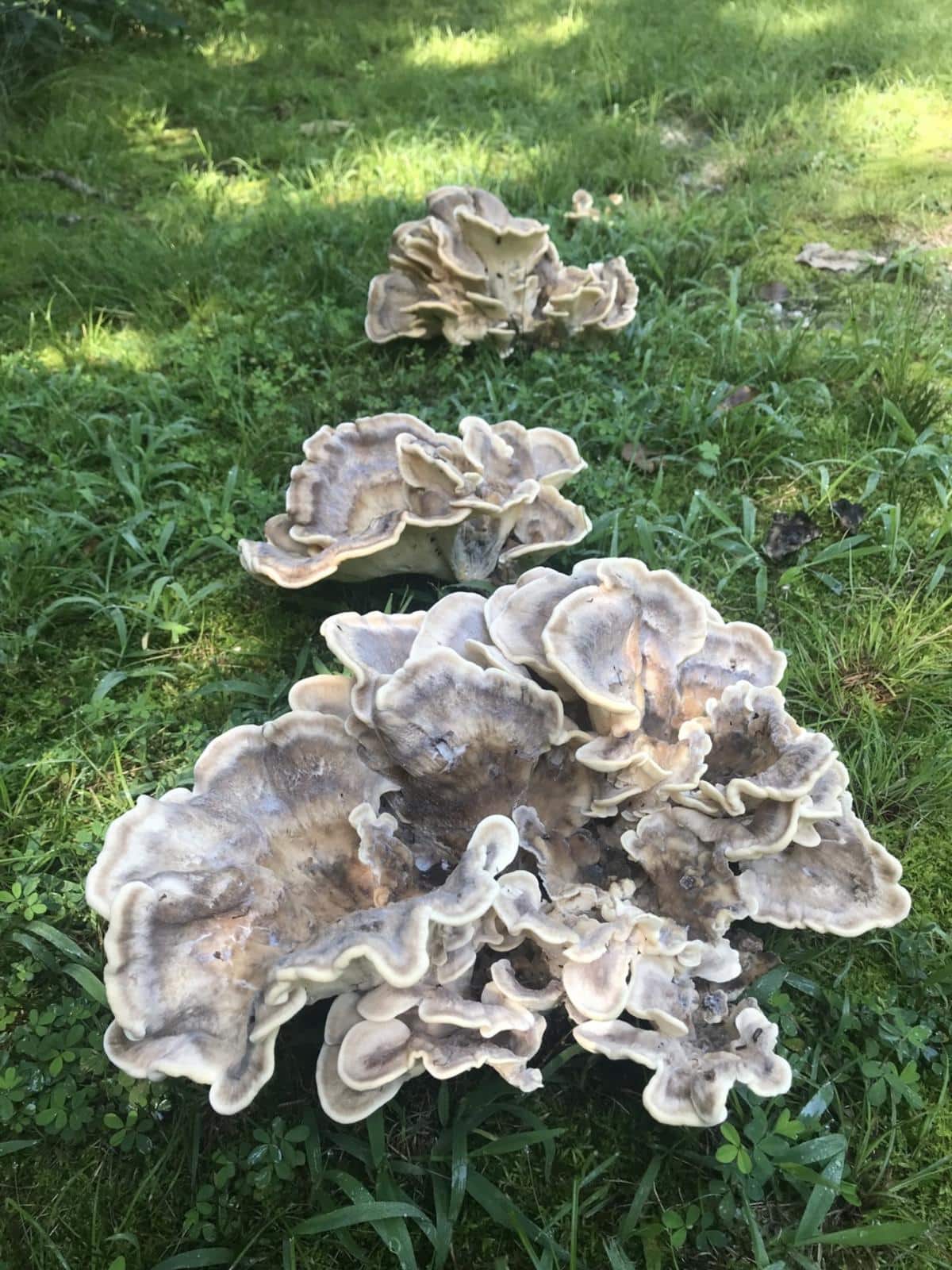
Hen of the woods is also very often confused with chicken of the woods simply because they share a similar name. They do not look alike; chicken of the woods is brightly colored orange or yellow or peach, nothing like the dull, drab gray of hen of the woods.
These are fall-only mushrooms and grow almost exclusively in the northeastern United States and Canada. They are also known from hardwood forests in parts of Japan, China, and Europe. What this means for the forager or would-be eater is that in order to get one of these mushrooms, you must live in an area where they grow or know someone who does. Or, find someone (from a trusted source!) selling fresh specimens. They are also available dried.
These wild edible mushrooms start showing up from late August through November, but September and October are your best bet for finding them. They’re pretty tough too – they can handle a light frost and keep growing even after the first snow hits.
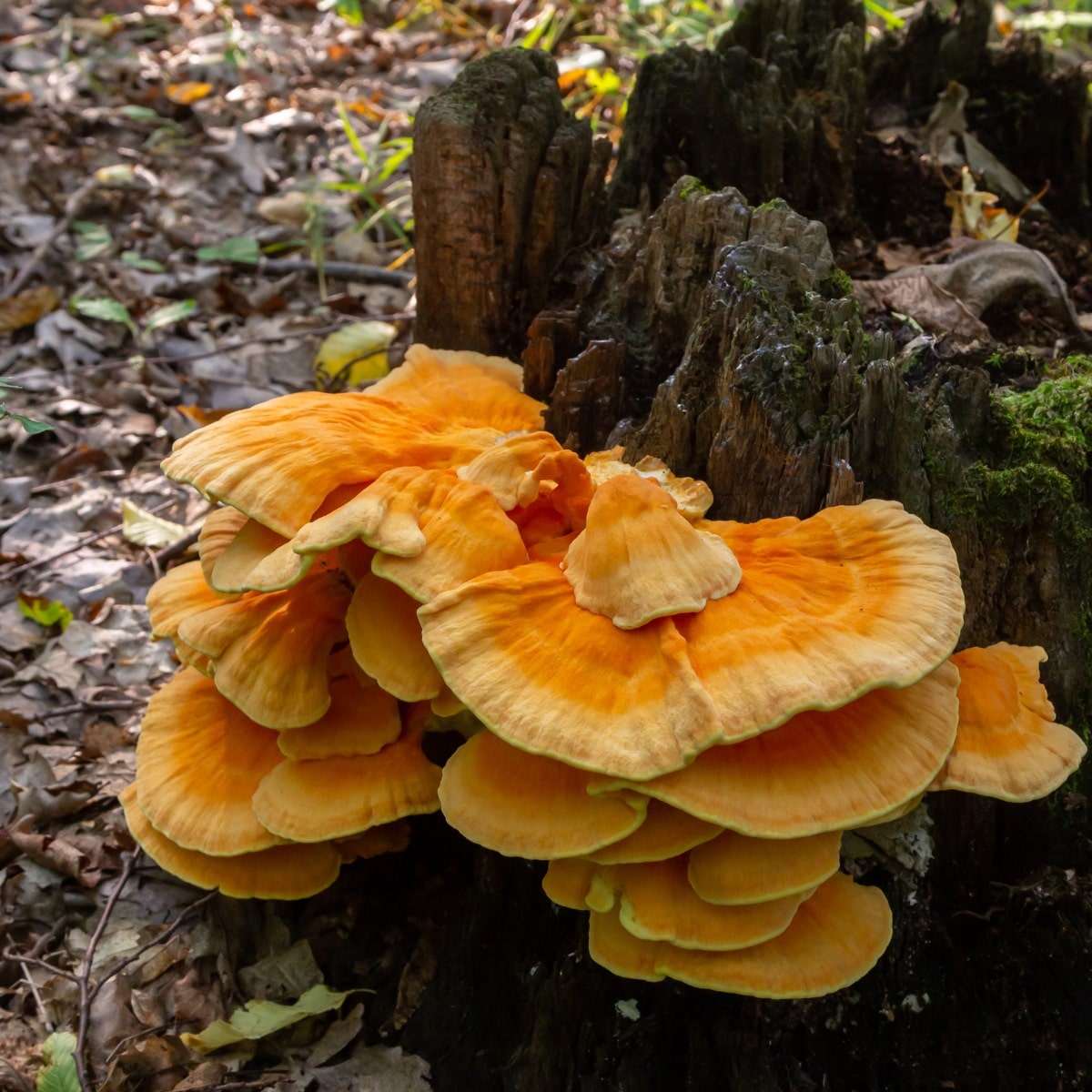
How To Get Hen of The Woods Mushrooms
Getting your hands on hen of the woods might be the trickiest part. If you’re in the Northeast, you might want to try foraging for them. Or, make friends with some foragers! In other parts of the country, foraging isn’t an option. But, they can be grown or bought.
Growing
Hen of the Woods mushrooms are tricky to grow indoors consistently. It’s not impossible, but it is complicated due to their oak preferences, temperature requirements, and long growing time. There tends to be a lot of trial and error. Growing this mushroom requires a lot of patience. Indoor grows might take 3-5 months while outdoor grows might take as long as 1-3 years for a log to fruit, if it does at all. This means that getting access to hen of the woods mushrooms isn’t always easy.
Several companies offer inoculated hen of the woods plugs so you can grow your own. There are also maitake kits available for simpler growing, but it still takes some know-how and a lot of patience. These are not a beginner species.
Hen of the woods has only been cultivated since the mid-1980s in Japan. Mass production followed about 5 years later. By 1999, Japanese cultivators produced nearly 40,000 metric tons, and in 2001, China produced 14,600 metric tons.
It was not easily cultivated by the log method, and its production wasn’t streamlined until an outdoor bed method was developed. However, it was the development of enriched sawdust that allowed Maitake to be produced in large numbers. Even more recently, a method to grow hen of the woods in bottles was developed, and that is changing the landscape even more.
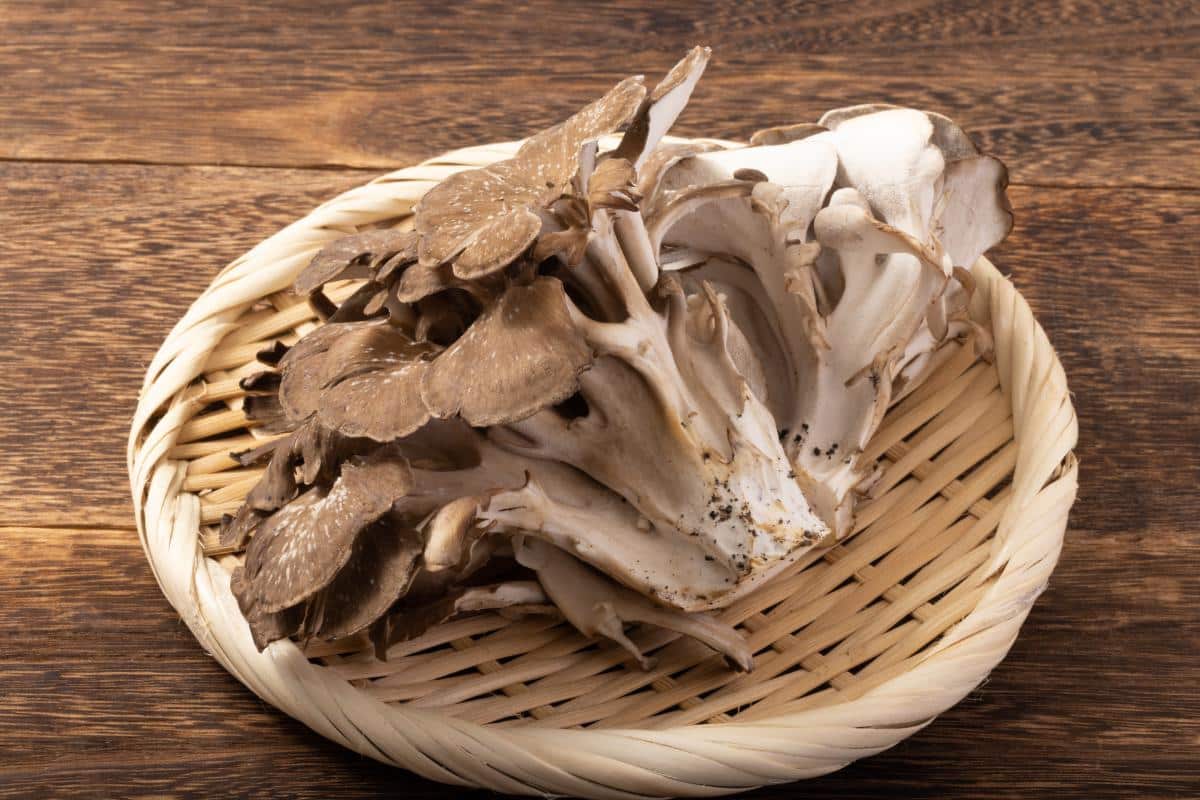
Foraging
These mushrooms love oak trees and seem to particularly prefer red oaks. They also grow in association with elm, maple, blackgum, and beech trees. Hen of the woods need old-growth and mature trees; the older and bigger the better the chances of finding the mushrooms. Oak trees that are over 200 years old make the best hosts.
Finding a good spot is a big deal because it means that you can come back year after year to harvest! Some spots stay productive for over 30 years on just one tree. On top of that, if you find one mushroom, make sure to check nearby trees – it’s not uncommon to find them spread out all over a tree grove.
Hen of the woods are slower growers compared to other species. They grow out over one to two weeks, which lets you track their progress and plan how to pick them at just the right moment. If you find a super young one, wait and go back in 3-4 days.
Knowing when to pick hen of the woods mushrooms is important. Bigger is not always better, and waiting too long to see how big they grow can mean you end up with a spoiled mushroom.
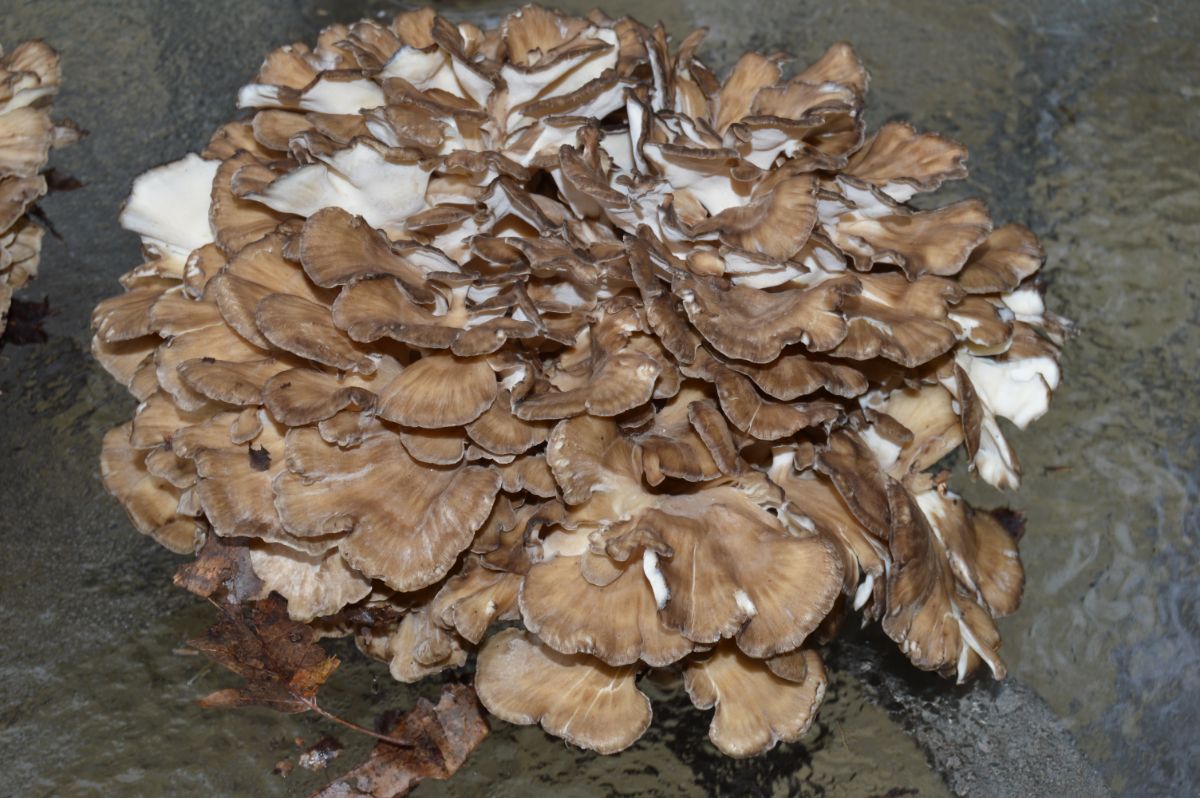
If you’re curious about foraging for these delicious wild mushrooms, take a look at our article: The Maitake Mushroom: Identification, Foraging, Lookalikes
Note that Hen of the Woods has “mast years” – seasons when they grow like crazy across wide areas. During these times, your regular spots produce more mushrooms, and trees that never had any might surprise you. To name just one example, foragers in 2020 found up to five times their usual harvest in regions of all sizes.
Buying
Farmer’s markets, online specialty stores, and local mushroom growers are the best places to source hen of the woods. Rarely do you see them in supermarkets. They are usually quite expensive too, due to their rarity and specialness.
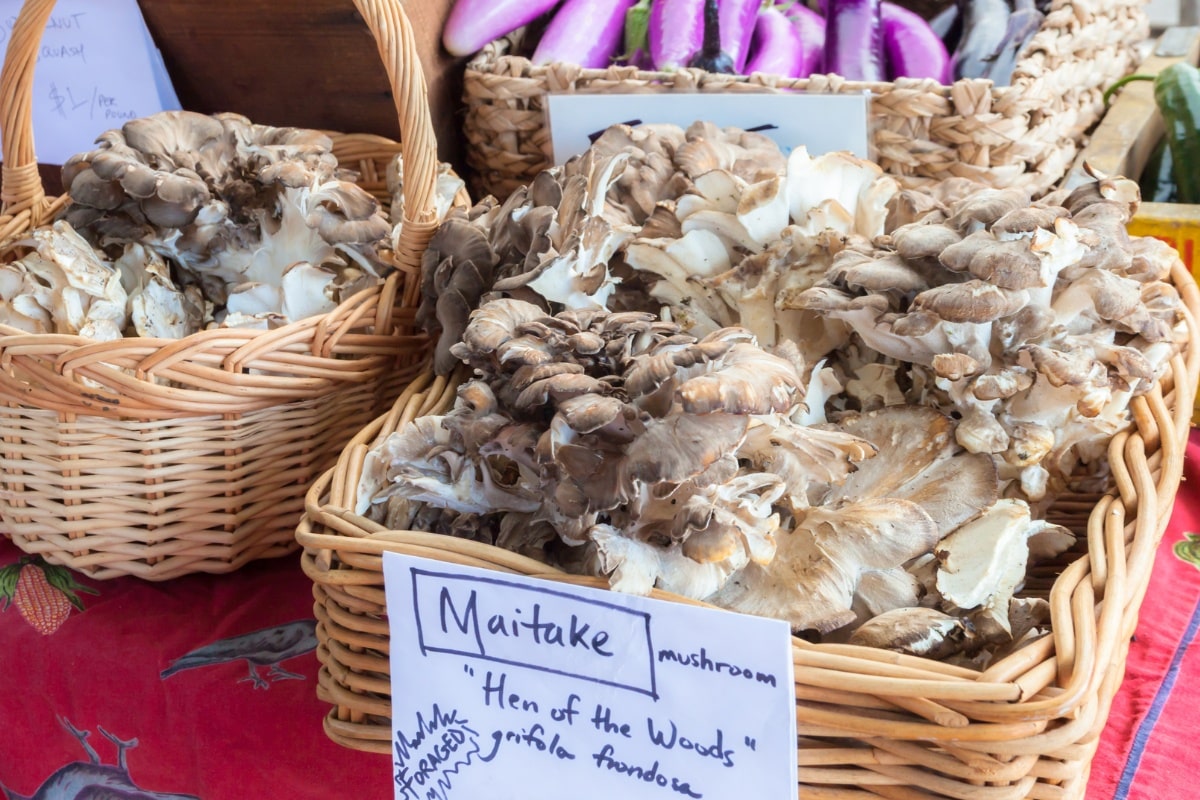
How to Choose Hen of the Woods Mushrooms
Whether you’re foraging or purchasing hen of the woods mushrooms, texture is extremely important. Good, fresh specimens should feel soft when touched and should have a dry, firm surface that looks smooth. The flesh should be pale cream throughout.
If the flesh feels exceptionally tough (not easy to slice through), then the mushroom is past prime and not worth foraging. Sometimes, there is white dust-like stuff on the fronds. This is the mushroom’s spores, which it releases as it ages. Most hen of the woods that have released their spores are too old to harvest.
Hen of the woods sometimes gets really buggy, but in general, the bug damage isn’t usually that bad. The most common issues are that they are dried out, shriveled, or spored out.
As the mushroom ages, the tops and bottoms of the fronds turn yellowish and unattractive. It can also get bitter. This is another sign that the mushroom probably isn’t going to taste that great and should be passed by.
- Stay away from mushrooms that show these signs:
- Sticky or slimy texture
- Shriveled appearance (they can dry out a lot)
- Dark spots or fuzzy mold
- Bad smells (fresh ones have a mild, nutty, spicy, or earthy scent)
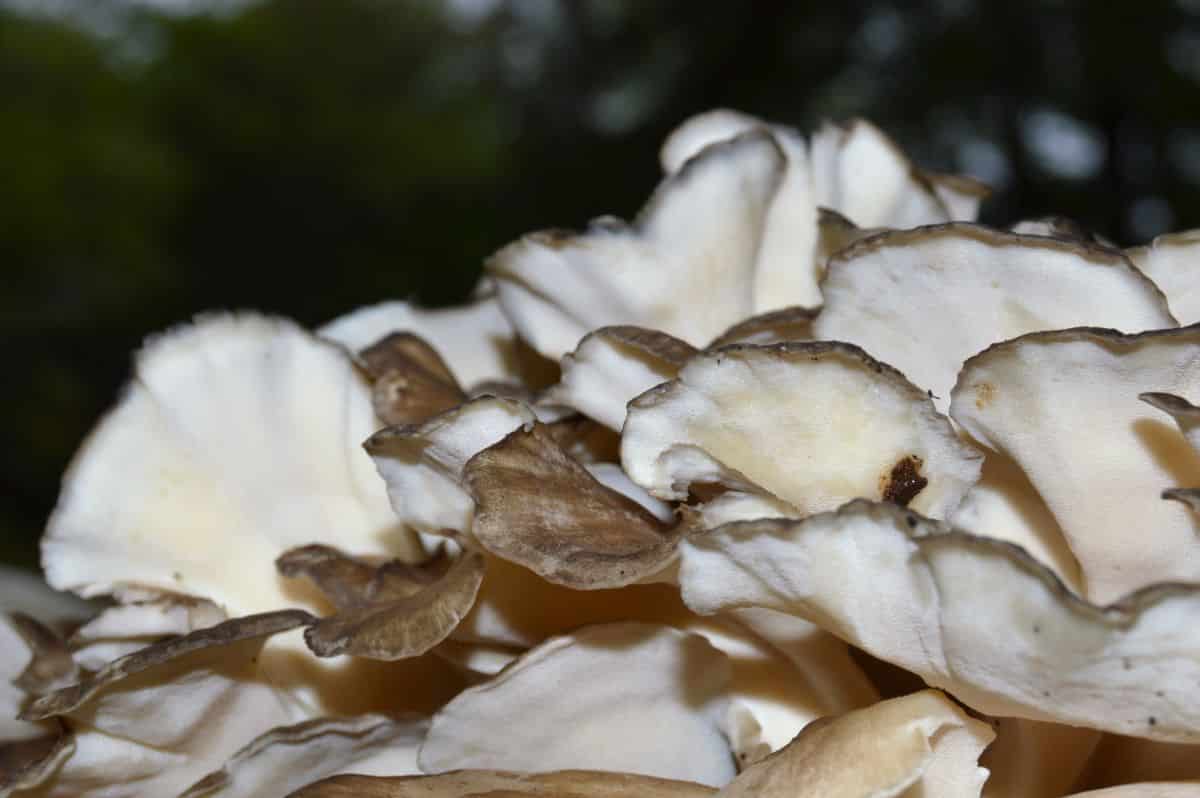
How To Store Hen of the Woods
It’s best not to wash mushrooms before storing them short-term in the refrigerator. When the mushrooms are wet and then put in a cool fridge, they’ll start decomposing faster. Store the hen of the woods mushrooms in a paper bag in the refrigerator, preferably in the crisper drawer.
Do not store the mushrooms in plastic, as that also speeds up the decay process. Hen of the woods will stay good for 5-14 days stored fresh. If they are particularly dry (which sometimes happens when you find them), you can put a damp paper towel in the bag, too. This allows for air flow while keeping moisture balanced. The damp paper towel will also help if you are trying to store them for a longer time. It adds just the small amount of moisture the mushrooms need to stay fresh.
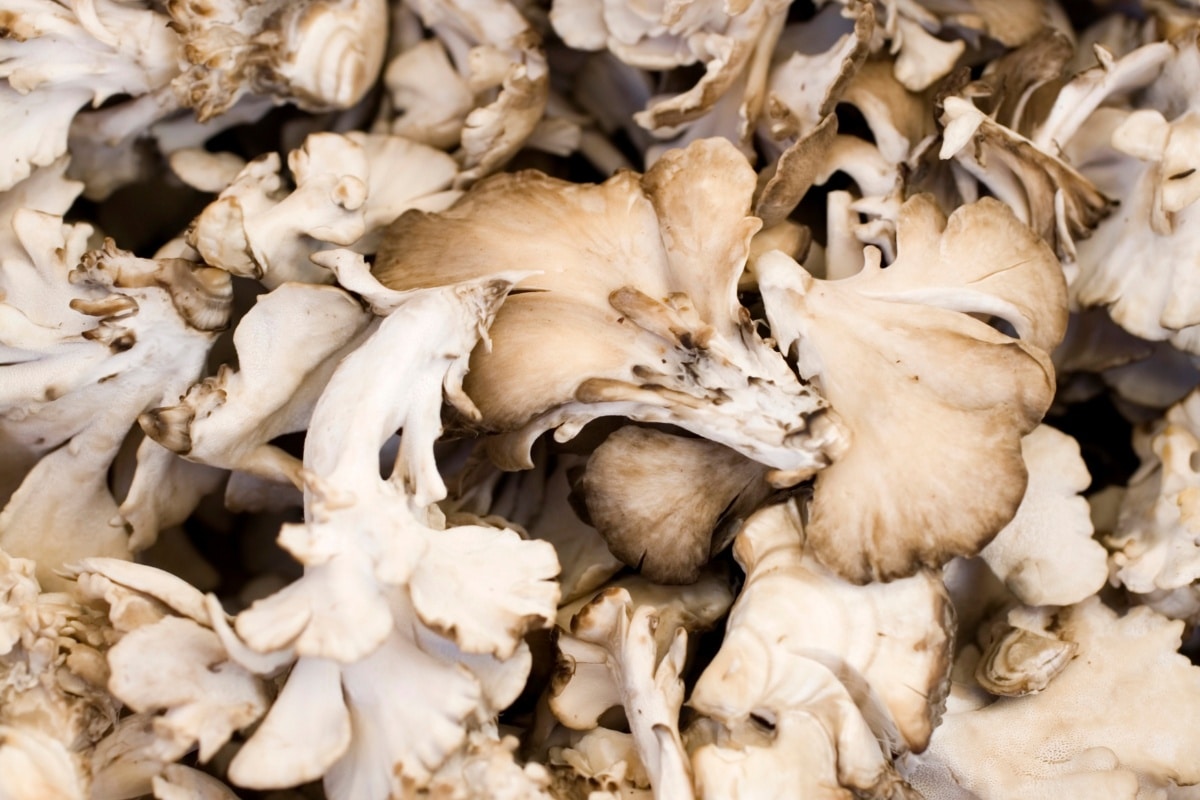
Dehydrating
Hen of the woods mushrooms dehydrate easily. And, they store well, too. If you have a particularly bountiful harvest, dehydrating is an excellent choice so you can enjoy the mushrooms later in the year.
The mushrooms can be cooked before dehydrating or dried raw. Either method is fine, just make sure to note whether they’re cooked first or not. Pre-cooked and then dried hen of the woods can be rehydrated and added quickly to any soup, stew, or stir-fry. If the mushrooms are dried raw, they’ll need cooking after being rehydrated.
The texture remains pretty close to the same even after rehydrating. It will be a little bit more rubbery, not quite as tender, but the flavor is wonderful, and the hens add a good texture to any dish.
Freezing
Hen of the woods freezes well raw and keeps its natural texture. This is rare in the mushroom world! And, just another reason this mushroom is so fabulous. Clean and cut the mushrooms into portions, then freeze them separately on parchment-lined trays for best results.
These mushrooms are also excellent partially or fully cooked before freezing. This method keeps both flavor and texture intact and makes meal prep faster later. We like to fully sauté hen of the woods with garlic, salt, and butter and freeze portions in easy-to-grab and defrost packages. It makes for a super delicious and quick side dish.
Pickling
Pickled hen of the woods mushrooms are really good! They can be used as a salad topping, added to charcuterie boards, or served alongside crusty bread and olives for a delicious appetizer or snack. Their savory, tangy taste will be a hit. Pickled hen of the woods is also excellent in sandwiches.
Canning
Some mushrooms are good candidates for canning, and hen of the woods is one of the best. The mushrooms don’t lose their texture during the canning process; they hold up really well and will be just as tender and delicious as when you first cooked them.
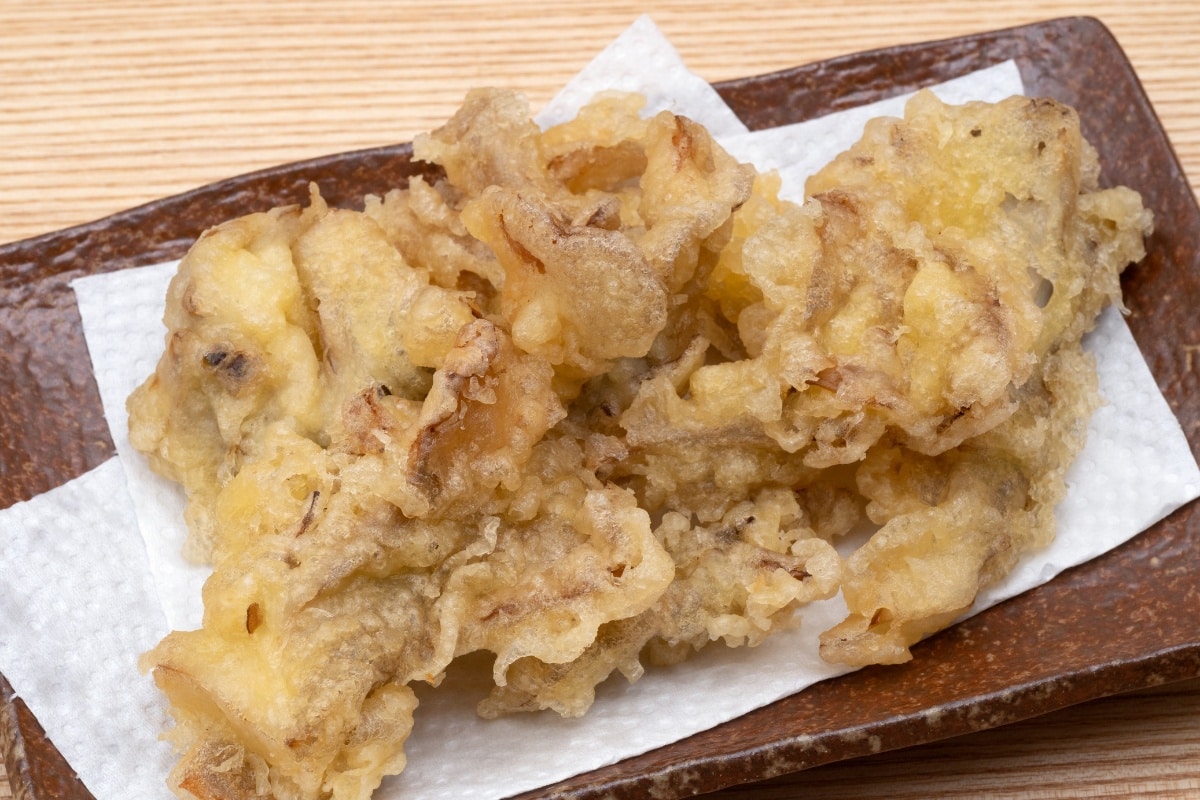
How To Clean Hen of the Woods Mushrooms
Cleaning always starts in the field when foraging for these mushrooms. The best way to reduce cleaning time is to cut away the dirty stem bases in the field and use containers with holes that let debris fall through. This cuts down the work needed at home.
Thankfully, hen of the woods usually aren’t too buggy and so that isn’t an issue. They often have bugs (spiders, beetles, ants) hiding between their fronds or nestled into the base, using the large mushroom more as a home than as food. This is quite different from some mushrooms whose flesh is literally riddled with insect larvae, and therefore many holes. But, while insect damage to the flesh might not be a huge concern, there is a whole different issue with cleaning these mushrooms.

The biggest problem you’ll face cleaning hen of the woods is dirt and debris. Leaves and dirt love to get stuck in the caps; oftentimes, the mushroom quite literally absorbs them as the fronds grow around the tiny sticks or leaves (or pebbles!).
Unfortunately, this can be a real pain to clean. It’s worth it though! Just be patient and make sure to get it all out. Be extra attentive while inspecting the mushroom. Crunchy mushrooms aren’t very good. Breaking your tooth on a hidden little pebble isn’t any fun.
The other issue, besides debris, is plain ol’ dirt. When it rains heavily, dirt splashes on the mushrooms. Then, when the dirt dries, the hen of the woods actually absorbs it into its flesh.
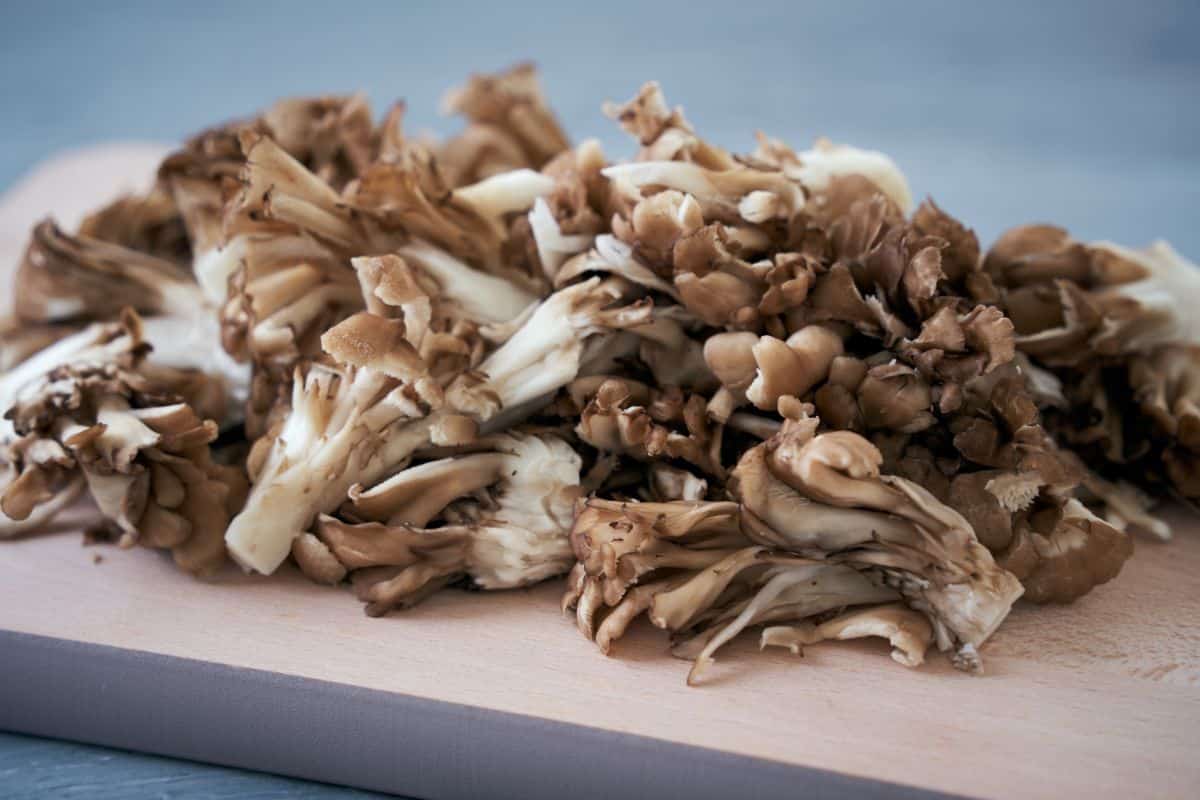
Hen of the Woods Cleaning Process
Start by breaking the mushroom into large leaves or clusters, and check for twigs and debris. Look at each section carefully and cut away any discolored parts or spots that look dingy yellow-beige. The flesh should be clean and white. If you pull the mushroom apart from the base upward, it keeps the fronds together in clusters. This technique helps keep each section intact.
Use a soft brush to remove visible dirt. Use a paring knife to scrape out embedded dirt, especially around the stem where the mushroom is often dirtiest. This works well since mushrooms often absorb dirt right into their flesh. You may need to use the paring knife to dig into some sections to get the really stuck-in debris.
The stem is edible, but it is often quite a bit tougher than the fronds. We generally don’t use the stems in whatever dish we’re making, but save them for later for broth or a duxelles.
If you are lucky enough to get a pristine, or mostly pristine, specimen, then you might not have to do more than wipe the dirt away with a damp cloth. Or, give the fronds all a quick rinse under running water.
Heavily soiled mushrooms, though, need a more in-depth process. Many people say not to soak mushrooms, but it’s not always a bad idea; it depends on what you’re planning on doing with them. If you intend to dry sauté your hen of the woods, soaking is a non-issue. Another alternative is to lay them out to dry for a couple of hours before cooking.
Step-by-Step Cleaning
- Cut off the base of the stem (if you didn’t already in the woods).
- Break the mushroom into manageable chunks or pieces.
- Use a toothbrush, damp cloth, or soft brush to wipe off dirt.
- If there is embedded debris, cut it out with a paring knife. You can also scrape the outer layer of flesh off with the paring knife if it is super dirty.
- Fill a bowl with cool to lukewarm water.
- Add the broken-up hen of the woods.
- Swish the mushrooms around vigorously. Use your hands or a soft cloth to rub off stuck-on dirt or debris.
- Put the mushrooms in a colander to drain.
- Lay the cleaned mushrooms out on a towel-lined pan.
- Cook the cleaned mushrooms soon for the best texture and flavor. They can last over a week in the fridge with a dry paper towel, but you’ll notice signs of deterioration.
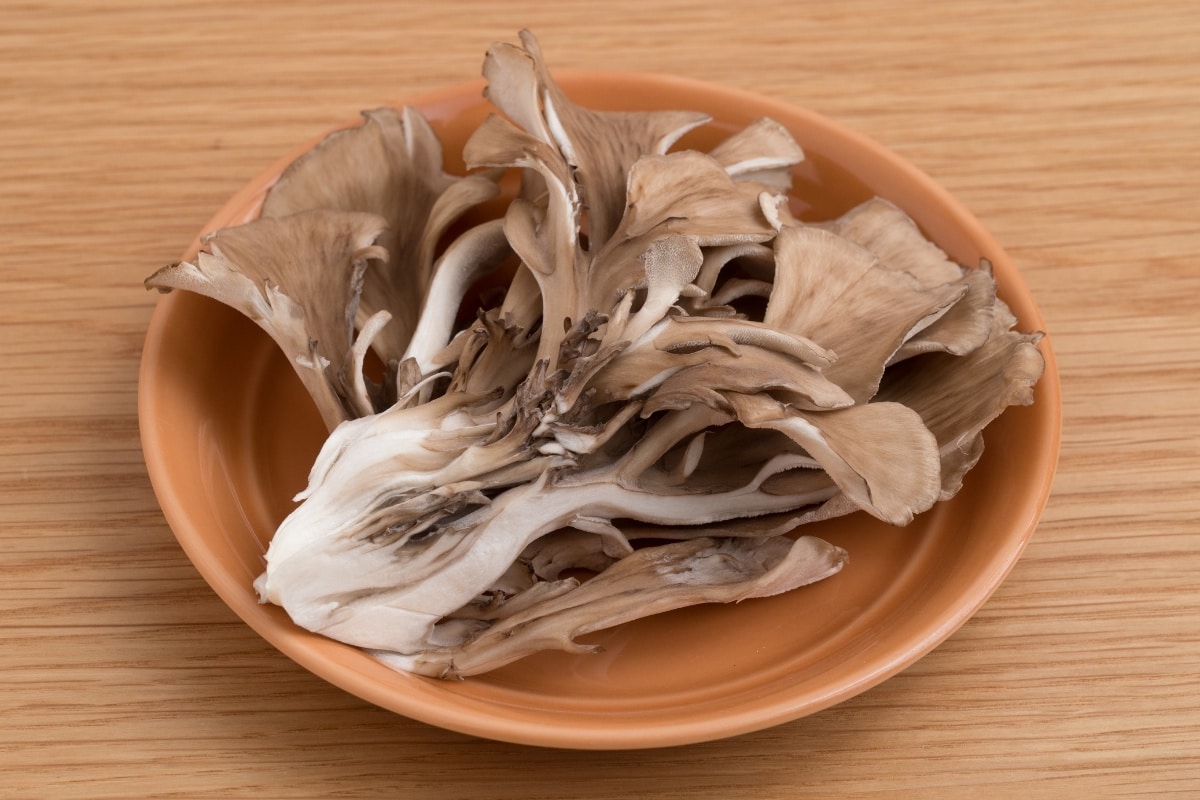
How To Cook Hen of the Woods Mushrooms
These mushrooms work beautifully with different cooking methods, from simple to complex. Hen of the woods is an extremely versatile mushroom. Hen of the woods has a rich, earthy, complex mushroom flavor. It is subtle yet rich with nutty undertones. This mushroom has a meaty, substantial texture that makes it exceptionally versatile in the kitchen. It also holds up extremely well to all types of cooking methods (it doesn’t reduce in size hardly at all, unlike some other mushrooms like the button mushroom).
When cooked, hen of the woods develops a deeper, more resonant earthiness that can almost “melt” into dishes when finely chopped. The tender fronds have a delicate, tender texture and the denser core is a more substantial bite, similar to meat.
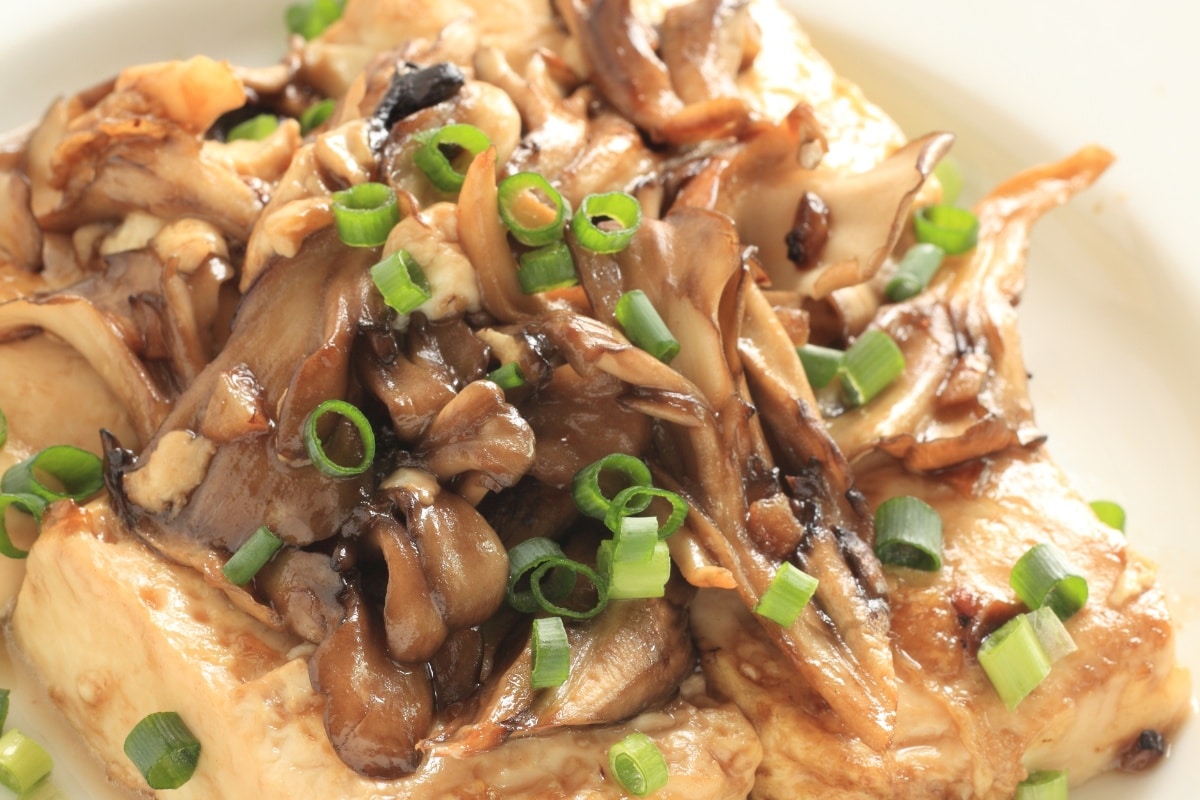
Simple Sauté
Cut the mushrooms into 1-inch pieces to ensure they cook evenly. Add butter and olive oil to a large skillet over medium-high heat. Put the mushrooms in once the butter stops sizzling – sauté them until they become tender, about 4 minutes. Add finely chopped shallots, garlic, and fresh thyme, then cook for 2 more minutes.
Dry Sauté
This is the method to use if your mushrooms are soaked or have lots of moisture. Dry sautéing is cooking the mushrooms without oil or butter until all the moisture is released.
Place clean mushrooms in a hot skillet over medium heat without oil or butter. Arrange the mushrooms in a single layer for quicker and better results. This vital first step lets the mushrooms release their natural moisture. The liquid should evaporate completely.
After the hen of the woods mushrooms release their moisture, add a combination of butter and oil into the pan. The oil helps prevent the butter from burning and maintains an even cooking temperature. At this point, you can also add garlic, salt, and fresh herbs or other seasonings if you want. Cook 5 minutes on each side or until the mushroom is tender.
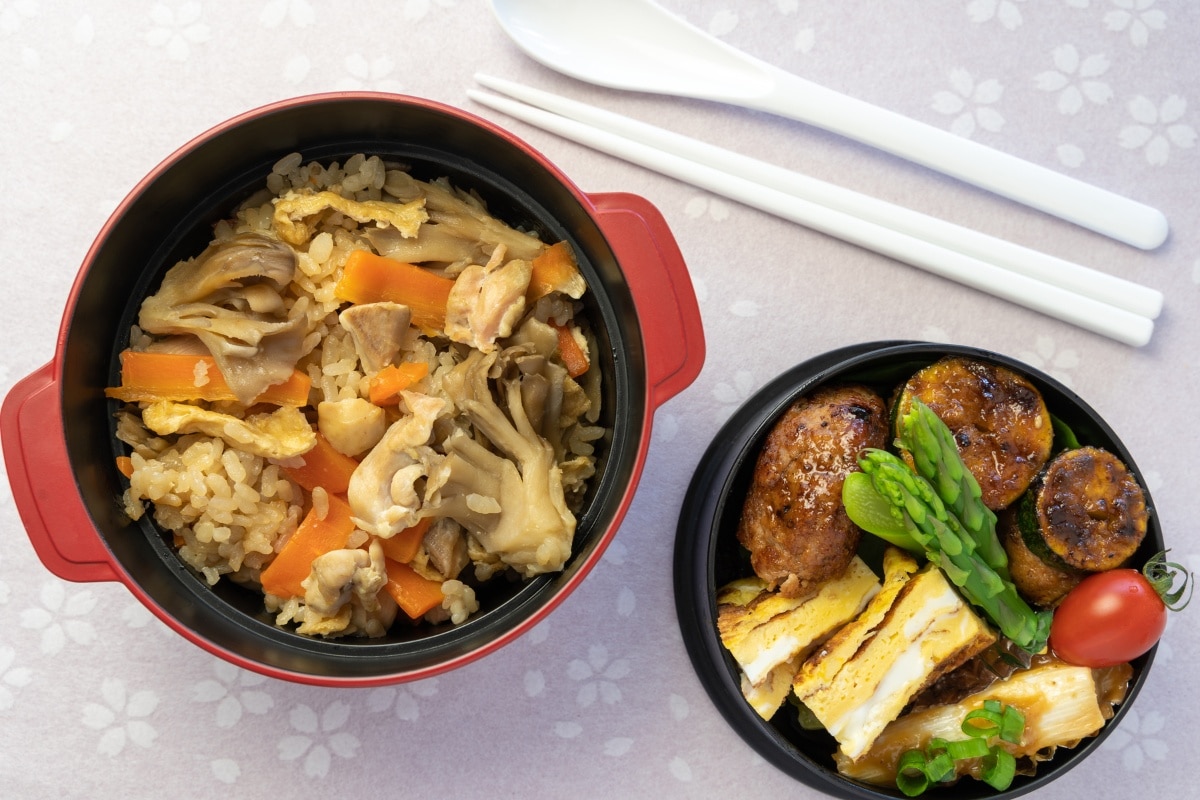
Roasting
Roasting is a fantastic way to prepare hen of the woods. The mushrooms hold up beautifully, and their texture remains tender. This method really brings out the natural flavors of the hen of the woods.
Set your oven to 425°F. Remove excess moisture by pressing the mushrooms between paper towels, then place them on a parchment-lined baking sheet. Add a drizzle of olive oil and herbs like thyme and oregano. They need 25-35 minutes in the oven. Rotate the pan halfway. You want crispy edges, but the center should stay tender.
Grilling
Pick larger pieces or “steaks” from the mushroom cluster for grilling. Toss the mushrooms in oil, salt, pepper, and herbs, then place them over indirect or low heat. You may need to brush them with more oil, depending on how moist they were to begin with. This gentle cooking lets the smoky flavors sink in while creating a golden-brown crust.
Cooking Tips For Hen of The Woods
- Use high heat to create crispy textures
- Leave space between the mushroom pieces so they don’t steam
- Add seasoning after cooking to keep moisture in (salt draws moisture out)
- Rest the cooked mushrooms before serving
These tips will keep the mushrooms’ meaty texture while boosting their natural umami flavor. The result should be slightly chewy on the outside and tender inside.
Our Favorite Hen of the Woods Recipes
- Kentucky Fried Hen of the Woods
- Maitake au Poivre
- Red Wine Maitake Mushroom Steaks
- Hen of the Woods Jerky (this recipe is bomb!)
- Shoyu Maitake
- Brown Butter-Sage Hen of the Woods
- Braised Maitake Mushrooms
- Roasted Maitake Mushrooms
- Fried Maitake Mushrooms
- Whole Roasted Maitake with Miso Butter
- Pickled Maitake Mushrooms
- Bloomin’ Hen of the Woods
- Japanese Maitake Mushrooms
- Maitake Mushroom Risotto
- Browned Butter Tortellini with Hen of the Woods Mushrooms
- Gnocchi and Hen of the Woods Mushroom
- Stir-Fried Maitake Mushrooms with Garlic and Chile Oil
- Hen of the Woods Mushroom Soup
- Hen Stroganoff
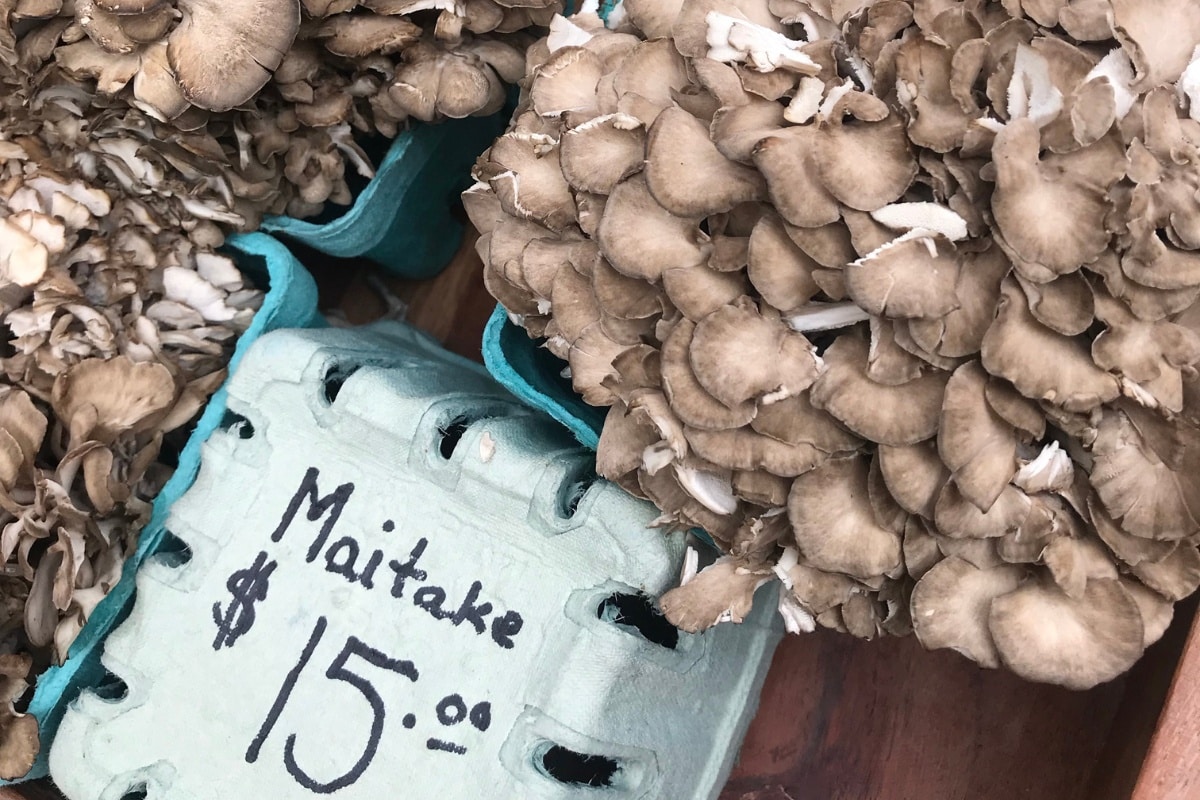
Common Questions About Preparing Hen of the Woods (Maitake)
Is it safe to eat hen of the Woods mushrooms raw?
Yes, but we don’t recommend eating any wild mushrooms raw. There is a higher risk of food sensitivity with raw mushrooms. Plus, in this case, hen of the woods tastes excellent cooked, so there is no reason not to. As with all new mushrooms, always try a small portion first to see if you have a reaction.
What’s the best way to store hen of the Woods mushrooms?
The best way to store fresh Hen of the Woods is in paper bags with a damp paper towel over them. Put them in the refrigerator’s crisper drawer. When stored properly, they can last up to two weeks.
Can hen of the Woods mushrooms be preserved for long-term storage?
Yes, hen of the woods can be preserved by dehydrating, freezing, canning, and pickling. Drying is great for long-term storage, while freezing (raw or partially cooked) works well for maintaining texture.




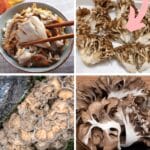
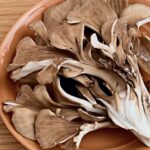
Leave a Reply